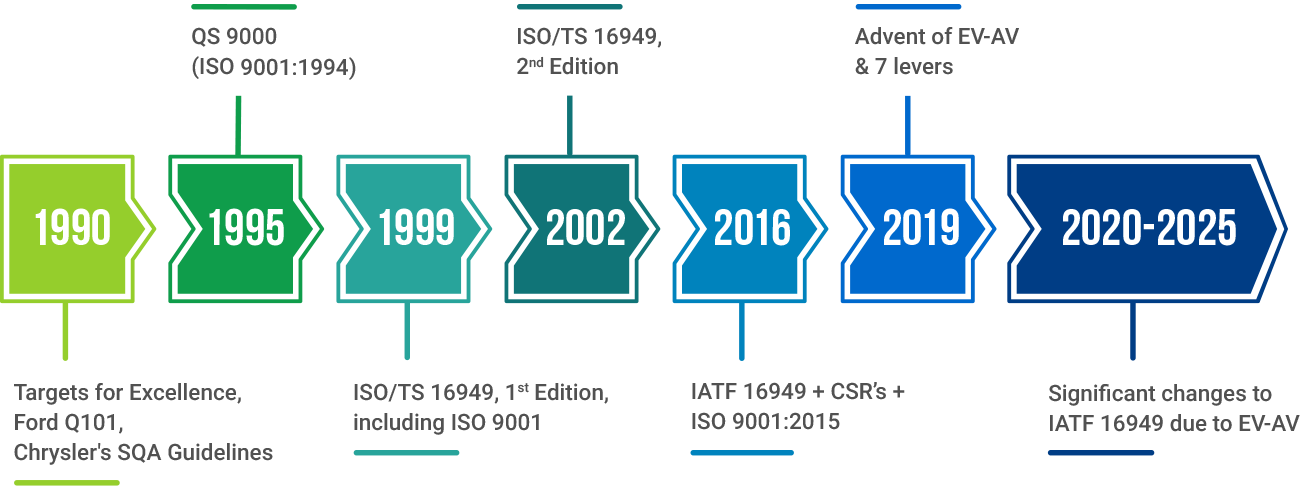Quality systems have been deployed in the automotive industry for many years. Companies like Ford, General Motors and Chrysler has developed QS-9000 in the USA, which unified their supplier quality system requirements in a single document. Similarly, Quality system requirements like EAQF, VDA6.1 and AVSQ were developed in France, Germany and Italy. This means that the automotive suppliers, and those servicing multiple vehicle manufacturers, had to meet a variety of Quality System Requirements all with the same goal in mind. The idea of harmonizing automotive quality system requirements grew as a collective goal.
The International Automotive Task Force (IATF) was established as an initial point, and also had representatives from almost all major European and North American vehicle manufacturers, suppliers and automotive trade associations. The ISO/TS 16949 was created in 1999 to standardize several evaluations and certification processes used in the global automotive supply chain.
In collaboration with the International Organization for Standardization (ISO), the group developed and published "ISO/TS 16949:1999 - Quality Systems - Automotive Suppliers - The specification was developed with input from the four established automotive standards: QS-9000, VDA6.1 (Germany), EAQF (France) and AVSQ (Italy).
ISO/TS 16949:2009 specified the quality system requirements for the design/development, production, and (where relevant) installation and servicing of automotive-related products.
Later in 2015, when ISO 9001:2015 was released, ISO/TS 16949 had also undergone revision to become IATF 16949:2016. IATF 16949 is no longer an ISO Technical Specification standard.
As ISO/TS 16949:2009 got replaced with IATF 16949:2016, it mainly specified the requirements for a Quality Management System (QMS), in the automotive. The IATF 16949 standard emphasizes the establishment of a Quality Management System that allows for continual development, with a focus on defect prevention and supply chain variation and waste reduction. The standard also provides the QMS standards for automotive production, services and/or accessory parts when paired with Customer-Specific Requirements (CSRs). IATF 16949:2016 is a stand-alone QMS standard that is completely consistent with the structure and requirements of ISO9001:2015. As a result, the IATF 16949 cannot be used as a standalone document; rather it must be used in conjunction with or as a supplement to ISO 9001:2015.
IATF Timeline

Request For Information
